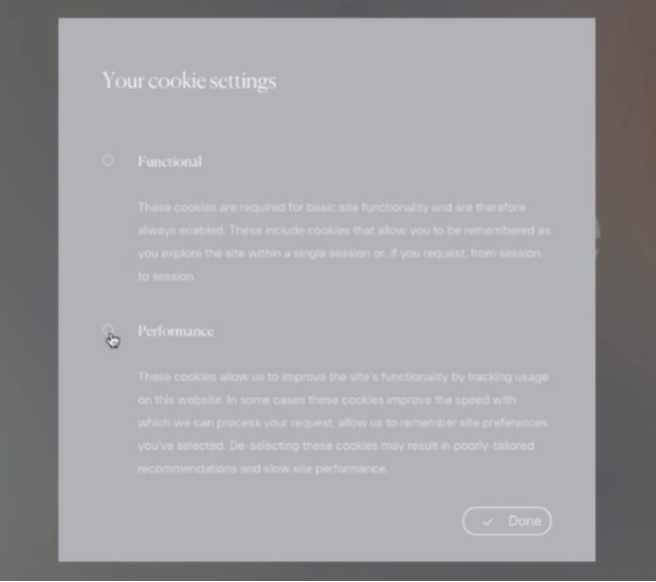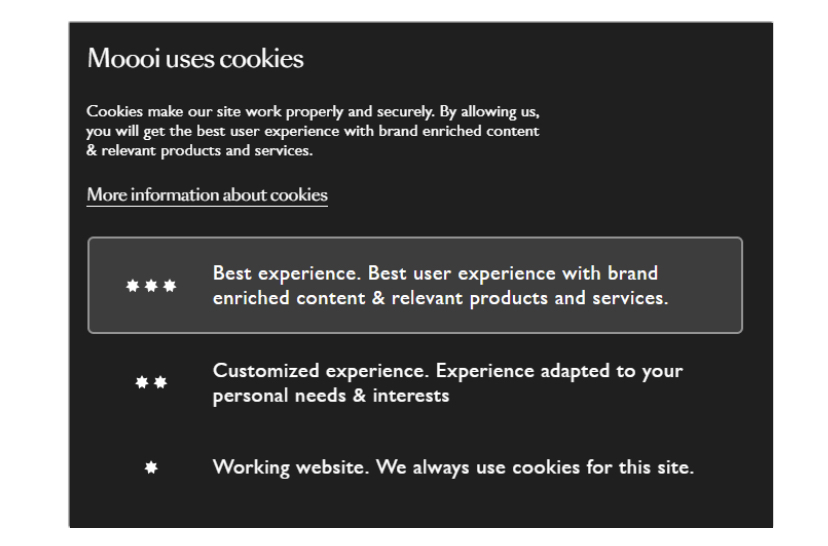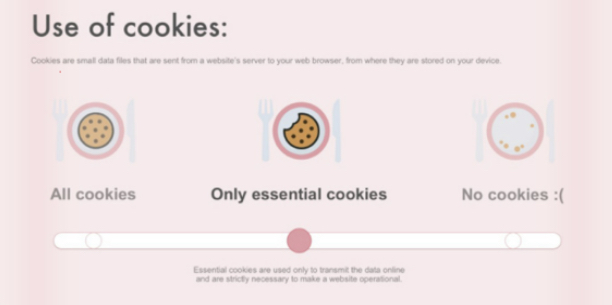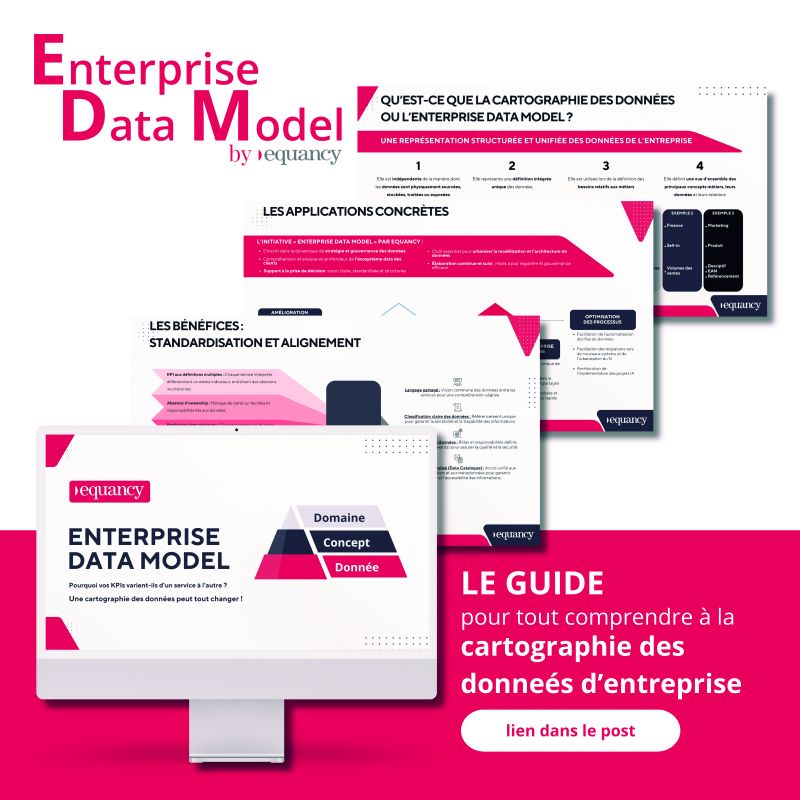Cookies: optimising the rate of user consent in the short term and planning for their disappearance in the long term
Just 1 year ago, on 1 April 2021, the new CNIL law on cookie management came into force and affected the collection of user consent, with two notable changes:
- it must be as easy to refuse cookies as to accept them
- only explicit consent allows data to be collected.
Since this change in legislation, the rate of users giving consent is 55% on computers and 71% on mobile according to the Commanders Act Privacy 2021 Barometer of 17 June 2021. It is therefore essential to have an optimised cookie banner. Today, we recommend 5 optimisations to maximise your consent rate.
1. Place your banner in the middle of the page so that users cannot avoid it
The banner can be positioned in several ways:
- rather at the bottom of the page in the footer,
- or at the very top of the page,
- and sometimes as a box on the left or right of the page.
Regardless of the positioning, the objective is to force the user to accept, reject or change the cookie settings. Banners that users can ignore or close in order to continue browsing have low opt-in rates because they do not prompt a decision. One would think that forcing site visitors to respond to a consent banner would generate more opt-outs, but this is generally not the case.
2. Focus on the user experience by highlighting the "Accept" or "Decline All" push
As a rule, users don't like to feel that they are being tricked. While choosing a discreet "Continue without accepting" in grey on a white background is legally acceptable and may work, it also risks frustrating the user who cannot find the refuse option easily. Conversely, a cookie consent banner with clear "accept" or "decline" options may be more user friendly and thus more effective in improving opt-in rates.
3. Use a third-party platform for more transparency
This recommendation is in line with the previous one. To increase transparency and promote user trust, it is best to collect consent from a third-party source. More and more sites are adopting this option and using the services of brands such as Axeptio or Didomi, which constantly optimise banners and other UX tools to deliver the best experience to users.
4. Make legal terms easy to understand so that users understand the options available to them
Typically, users are faced with three options: accept cookies, reject them or set the options. The latter often results in a long list of cookies to read and then a series of checkboxes to individually accept or decline the options offered. The explanations that accompany each cookie are full of complex legal terms and the whole thing makes the first experience on the site rather unappealing to the user. Grouping cookies into two or three clear categories with a simple explanation can help the user to find their way around and make a quick choice. Moreover, almost 50% of users are ready to consent to the collection of data if they get a more personalised service in return (source: digital consumer trends, 2021). Thus, being explicit about the use of the data can lead to a higher rate of consent.

5. Integrate the cookie banner into the site design
Again with the aim of improving the user experience, we recommend optimising the design of the banner to facilitate the cookie selection process. Very simply, if the banner fits in the site seamlessly, it can already give the impression that this choice is part of the UX experience. Secondly, the banner can adopt different layouts that make this choice more playful and enjoyable. The examples opposite show banners that are aesthetically pleasing, clear and integrated into the design and therefore the user's site experience.


WHAT ARE THE ALTERNATIVES TO CONSENT BANNERS?
These cookie banner optimisations can improve the consent rate in the short term. However, third-party cookies will soon disappear. Google has announced the end of third-party cookies on its Chrome browser for mid-2023. This is why alternatives are being developed in order to continue to track users' browsing and behaviour (for advertising, performance measurement or content personalisation purposes). Here are 3 possible alternatives:
First alternative: cohort targeting or privacy box
The first alternative is cohort targeting or the Privacy Sandbox (technology developed by Google). This is a new way of targeting users by grouping them into cohorts. It allows individuals to be hidden in large groups with common interests and to share some of their information with advertisers. The CNIL defines this method as "constituting a group of individuals with similar characteristics (centre of interests, etc.), which will be identified by a unique and persistent identifier, shared by all users in the same cohort and managed at the level of the browser or operating system".
This is a first response for a cookie-free future. The aim of cohort targeting is therefore to provide anonymity to user data, while using the browser APIs to continue to allow advertisers to do behavioural targeting. The objective is no longer to target an individual but a group of individuals with similar interests.
Advantages and limitations of cohort targeting
The advantage of cohort targeting is that it is a solution that puts privacy at the centre of its priorities. However, the cohort targeting model (or the privacy sandbox) will not allow for real-time media buying optimisation. In addition, there are questions about the reliability of API information regarding the measurement of campaign performance and the attribution process.
Second alternative: The unique identifier
Another alternative to third-party cookies is the unique identifier. Once the visitor's consent has been obtained, this method consists of anonymising visitors behind an identifier that will be used for advertising purposes. This can be done for example by telephone number or email address. When the identifier is retrieved, it is "hashed" to generate a unique identifier. This unique identifier (e.g. the email address) is provided by the user to log in to a site and is then used again on other sites, linking these accounts and tracking the visitor's navigation.
Advantages and limitations of the unique identifier
The advantage is that it allows effective and very reliable retargeting and performance measurement. However, solutions already exist (notably at Apple) to generate unique email addresses. Furthermore, for the unique identifier solution to be effective, the volume of consents must be high, and for the moment, Internet users do not identify themselves on every visit to a site.
Third alternative: Contextual targeting
Contextual targeting is based on the environment and context in which the advertising content will be displayed. Currently, third-party cookies allow for individual targeting. This is a targeting method that targets users according to their interests, whereas contextual targeting selects audience hubs and the media to which the target visitors are likely to go. It is therefore based on site themes, page URLs and searched keywords.
To illustrate this difference, individual targeting is based on the user's interests, for example, a user who is passionate about tennis will receive tennis-related advertisements during his or her various navigations, whether on a journalistic site or a travel agency site. For contextual targeting, when a user visits a site talking about tennis, the ads on that page will be related to the content and context of the page: tennis.
Advantages and limitations of contextual targeting
The advantage for visitors is that their privacy is respected and no consent is requested. Indeed, contextual targeting delivers adapted advertisements after having analysed the content of the pages and not after having analysed the Internet user who consults the page. On the publisher side, with contextual targeting, they can continue to monetise their audience by offering relevant ad placements. In addition, there is no more keyword exclusion to be done because the advertising comes directly from the content of the pages. The main disadvantage of contextual targeting is that it does not allow for a lot of advertising.




